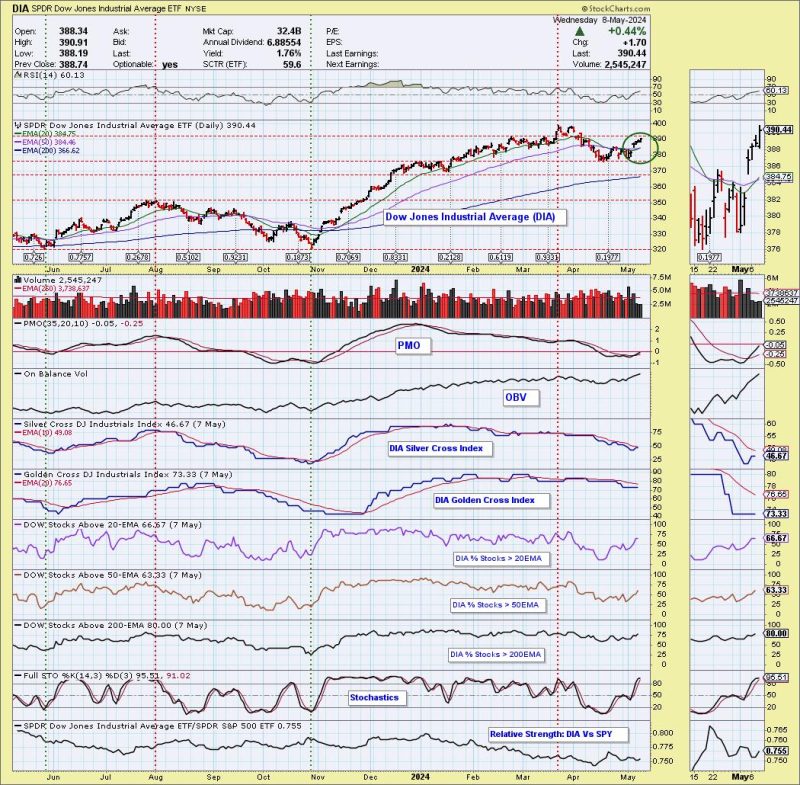Throughout the history of financial markets, traders and investors have utilized a myriad of indicators and patterns to help guide their investment decisions. One such signal, known as the ‘silver cross,’ has recently surfaced and is gaining attention for its possible implications on two major US indices: the Dow Jones Industrial Average (DIA) and the Russell 2000 (IWM).
The ‘silver cross’ is a technical pattern used primarily by stock market analysts and investors to predict potential ‘bullish’ market conditions. It occurs when a 20-day moving average (period of shorter duration) crosses a 50-day moving average (period of longer duration) from below—signifying an upward price trend.
This pattern has been witnessed in both the Dow and Russell 2000, signaling possible bullish momentum for these indices. In the case of the Dow, the ‘silver cross’ appeared on January 13, 2022, after the short-term average broke through the longer-term moving average.
For the Russell 2000, a small-cap stock index where risk appetite among investors tends to be higher, the ‘silver cross’ emerged on January 17, 2022. This demonstrates that the gains are not merely limited to ‘blue chip’ corporations but are permeating into small-and medium-cap businesses as well.
While the ‘silver cross’ is widely regarded as a bullish signal in investment circles, it’s important to remember that it doesn’t guarantee absolute market prosperity. Investors and traders should consider other factors such as market volatility, economic data, and sector performance while making their decisions.
Moreover, historical data provided by Godzilla Newz also shows mixed outcomes after a ‘silver cross’ signal on the Dow and Russell 2000. For instance, the Dow’s average return after a ‘silver cross’ is a loss, but the median return is a small gain. Similarly, the Russell 2000’s average and median returns after a ‘silver cross’ are also mixed.
It’s worth considering that while the ‘silver cross’ may play a pivotal role in suggesting favorable market action, the effectiveness of the signal also depends on the broader market context in which it appears. Be it interest rates, global geopolitics, or fiscal policies—these aspects can have a substantial influence on the overall market performance.
The current prediction of bullishness in the Dow and Russell 2000, backed by the recent ‘silver cross’ indicators, has sparked optimism among many investors and traders. However, one must always tread with caution and continue to monitor market elements constantly.
